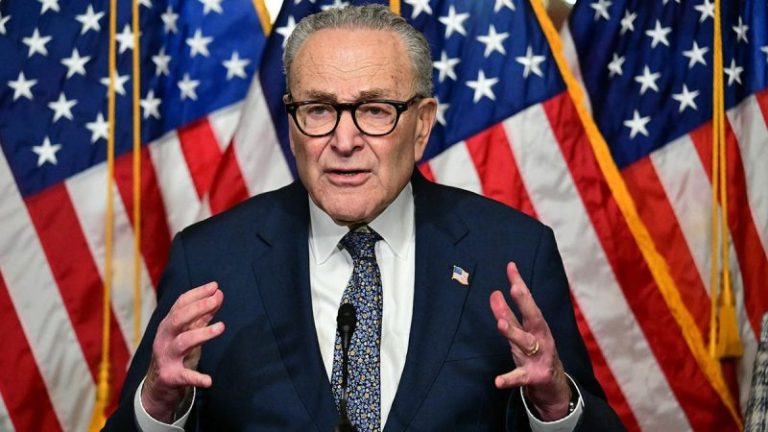Speaker Mike Johnson, R-La., is glad the Senate finally managed to break through its weeks-long standoff on the government shutdown, he told Fox News Digital on Monday morning.
‘It’s a great development. It’s long overdue. It vindicates our position in this all along,’ the House leader said.
He added that he would have ‘a lot more to say at a press conference this morning.’
Asked how soon the House would return to session, Johnson said, ‘Immediately.’
‘We’re going to get everybody back on a 36-hour notice, so it’ll be happening early this week,’ Johnson said.
The House has not been in session since Sept. 19, when lawmakers there first passed a bill to avert a shutdown by extending current federal funding levels through Nov. 21. Democrats rejected that deal, however, kicking off weeks of a worsening impasse where millions of Americans’ federal benefits and air travel were put at risk.
Eight Senate Democrats joined all but one Senate Republican in breaking a filibuster to advance an updated government funding deal late on Sunday night.
It came on Day 40 of the government shutdown — which already holds the record for being the longest shutdown in U.S. history.
Terms of the deal include a new extension of fiscal year (FY) 2025 federal funding levels through Jan. 30, in order to give congressional negotiators more time to strike a longer-term deal on FY 2026 spending.
It would also give lawmakers some headway with that mission, advancing legislation to fund the Department of Agriculture and the Food and Drug Administration; the Department of Veterans Affairs and military construction; and the legislative branch.
They are three of 12 individual bills that are meant to make up Congress’ annual appropriations, paired into a vehicle called a ‘minibus.’
In a victory for Democrats, the deal would also reverse federal layoffs conducted by the Trump administration in October, with those workers getting paid for the time they were off.
It also guarantees Senate Democrats a vote on legislation extending Obamacare subsidies that were enhanced during the COVID-19 pandemic, which are set to expire at the end of this year.
Extending the enhanced Obamacare subsidies was a key ask for Democrats in the weeks-long standoff.
No such guarantee was made in the House, however, so Democrats effectively folded on their key demand in order to end the shutdown — a move that infuriated progressives in Congress.










